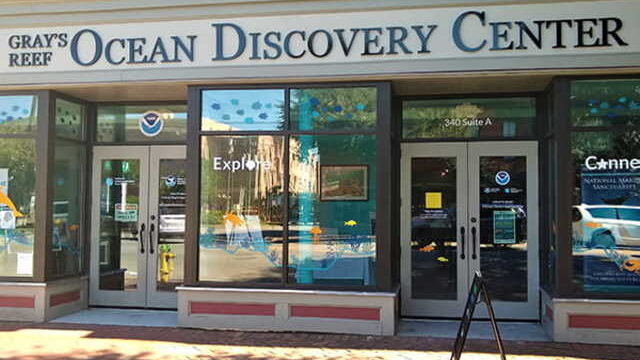Gray's Reef National Marine Sanctuary Foundation
- Non Profit
- Museums
- Family Friendly
- Educational Services
- Gifts, Novelties
About
The Gray’s Reef Chapter of the National Marine Sanctuary Foundation is a nonprofit organization dedicated to protecting, promoting, and connecting the community with Gray’s Reef National Marine Sanctuary. To share the wonders of this vibrant underwater park, we operate the Ocean Discovery Center, a free and educational center located in downtown Savannah on MLK Jr. Blvd.Just 19 miles off the Georgia coast, Gray’s Reef is one of the largest live-bottom reefs in the southeastern United States. This dynamic marine habitat serves as an underwater oasis, providing refuge for sea turtles, dolphins, whales, over 200 species of fish, and nearly 1,000 species of invertebrates. At the core of our mission is a commitment to safeguarding this extraordinary ecosystem while inspiring the next generation of ocean stewards and fostering a lasting connection between people and the sea.
Since opening in 2023, the Ocean Discovery Center has become a gateway for the community to explore Gray’s Reef. Visitors can experience interactive exhibits, take a virtual dive with sea turtles, and learn about the cutting-edge research and conservation efforts happening at the sanctuary. In 2025, we will celebrate a grand re-opening with new hands-on exhibits and expanded partnerships with schools, creating more opportunities for students to engage with marine science and conservation.
Beyond the Ocean Discovery Center, our Foundation actively brings the wonders of Gray’s Reef to the broader community through free public programs, educational initiatives, sustainable seafood events, and permanent interpretive signage along the Savannah waterfront. Additionally, our targeted programming highlights the critically endangered North Atlantic right whale, raising awareness of Gray’s Reef’s vital role as part of their winter calving grounds.
Through education, advocacy, and hands-on engagement, we strive to foster a deep appreciation for our ocean’s treasures and ensure the protection of Gray’s Reef for generations to come. Join us in exploring, learning, and protecting this incredible marine sanctuary.





